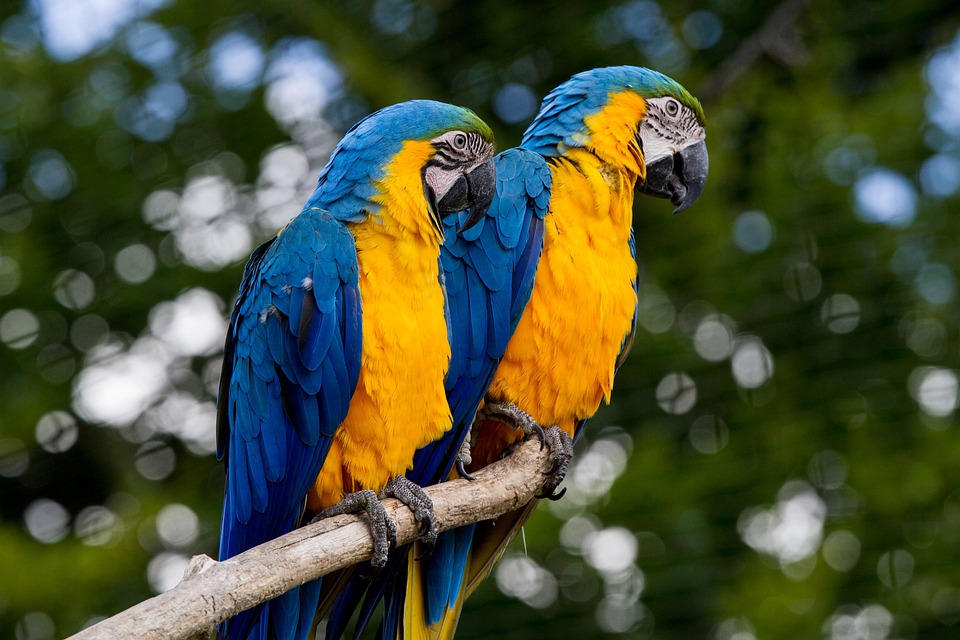Parrots are highly intelligent and trainable birds that thrive on mental stimulation and social interaction. Teaching them tricks can be a fun and rewarding experience for both you and your feathered friend. However, it’s crucial to establish clear boundaries and cues to ensure that your parrot performs tricks only when prompted. In this article, we will explore effective methods to discourage parrots from performing tricks without cues, ensuring a well-behaved and responsive companion.
Understanding the Importance of Cues
Cues are essential in parrot training as they signal to your bird when it’s appropriate to perform a specific behavior or trick. They serve as a communication tool between you and your parrot, enabling you to establish clear expectations and promote mutual understanding. Without cues, parrots may become confused or engage in unwanted behaviors, such as performing tricks at inappropriate times or demanding attention excessively.
Establishing Consistent Cue Signals
Consistency is key when it comes to training parrots. To discourage your parrot from performing tricks without cues, it’s crucial to establish consistent cue signals for each specific trick. Here’s how you can do it:
1. Choose Distinctive Cues: Select unique verbal cues or hand signals for each trick you teach your parrot. For example, “Wave” can be accompanied by a raised hand, while “Spin” can be signaled by a circular hand motion.
2. Repetition and Reinforcement: Consistently use the chosen cues whenever you want your parrot to perform a specific trick. Repeat the cue before requesting the behavior and reinforce it immediately with treats or praise when your parrot responds correctly.
3. Avoid Mixed Messages: Be cautious not to inadvertently reinforce or confuse your parrot by using the cue signal outside of training sessions. This can lead to your parrot associating the cue with different behaviors or performing tricks without cues.
Correcting Unprompted Trick Performances
Even with consistent training efforts, parrots may occasionally attempt to perform tricks without cues. Here are some effective strategies to discourage and correct this behavior:
1. Ignore Unprompted Tricks: When your parrot attempts to perform a trick without a cue, avoid giving any attention or reinforcement. Turn away or redirect your focus elsewhere to signal that the behavior is not desired.
2. Redirect with Alternative Behaviors: Encourage your parrot to engage in alternative behaviors that are appropriate and desirable. For example, if your parrot starts performing tricks without cues, redirect its attention to a puzzle toy or a foraging activity.
3. Use Negative Reinforcement: In some cases, employing negative reinforcement techniques, such as withholding attention or briefly removing your parrot from the training area, can help discourage unprompted trick performances. However, it’s important to use these techniques sparingly and ensure they do not cause distress to your parrot.
FAQs
Q: Why is it important to discourage parrots from performing tricks without cues?
A: Discouraging parrots from performing tricks without cues helps establish clear boundaries and prevents confusion or unwanted behaviors. It promotes better communication between you and your parrot and ensures that tricks are only performed when prompted.
Q: Can parrots learn to differentiate between different cues for different tricks?
A: Yes, parrots are highly intelligent and can easily learn to associate specific cues with different tricks. Consistent repetition and reinforcement will help them understand and differentiate between the cues.
Q: What if my parrot keeps performing tricks without cues despite consistent training efforts?
A: If your parrot continues to perform tricks without cues, it may indicate a need for further training or reinforcement. Revisit the training process, ensure you are using consistent cues, and consider seeking guidance from a professional avian behaviorist.
Q: Are there any specific parrot species that are easier to train with cues?
A: While individual parrots may vary, certain species, such as African Greys and Cockatoos, are known for their exceptional intelligence and trainability. However, with patience, consistency, and positive reinforcement, most parrot species can learn to respond to cues effectively.
By following these strategies and maintaining consistency in your training approach, you can effectively discourage your parrot from performing tricks without cues. Remember, patience and positive reinforcement are key to building a strong and trusting bond with your feathered companion.









